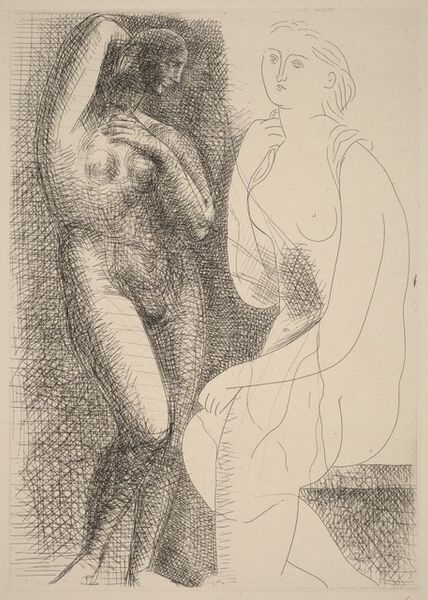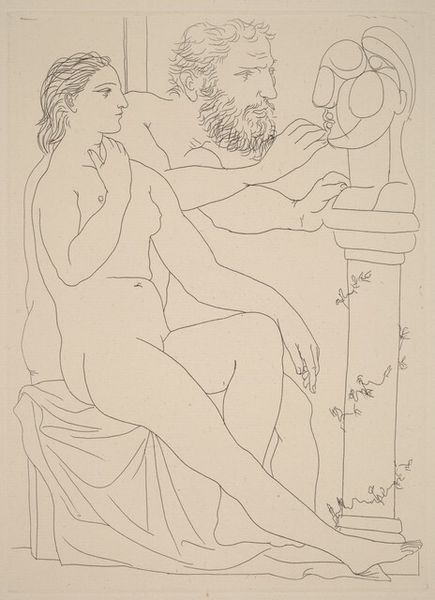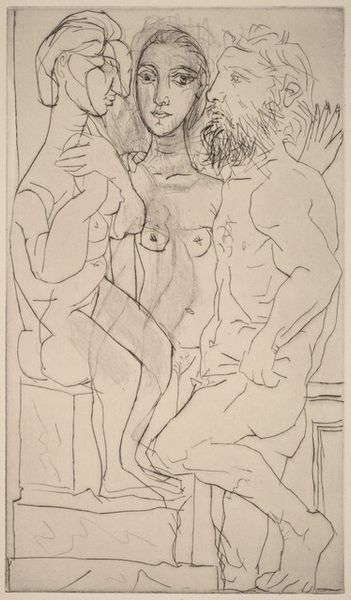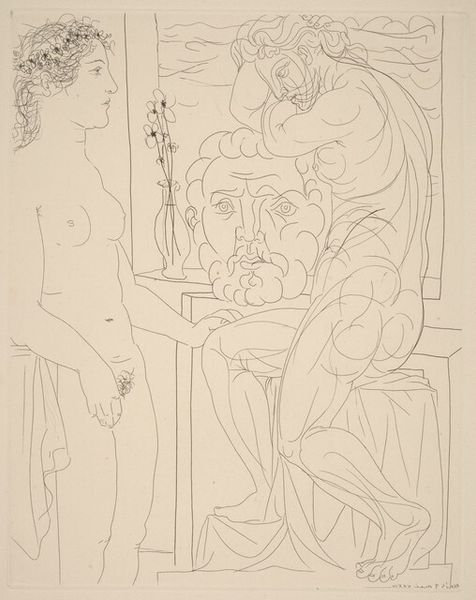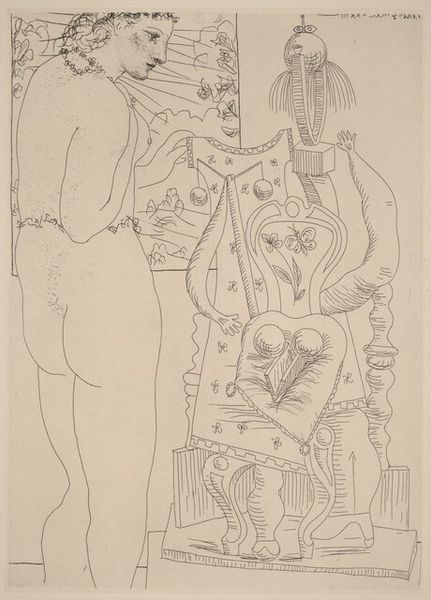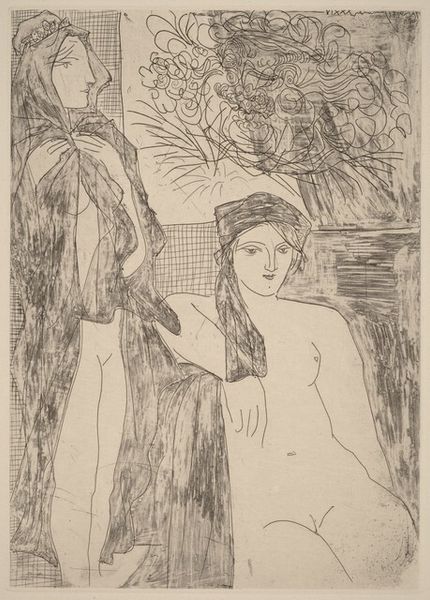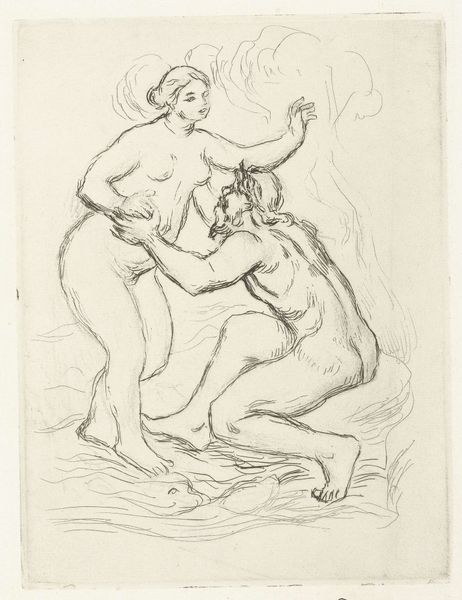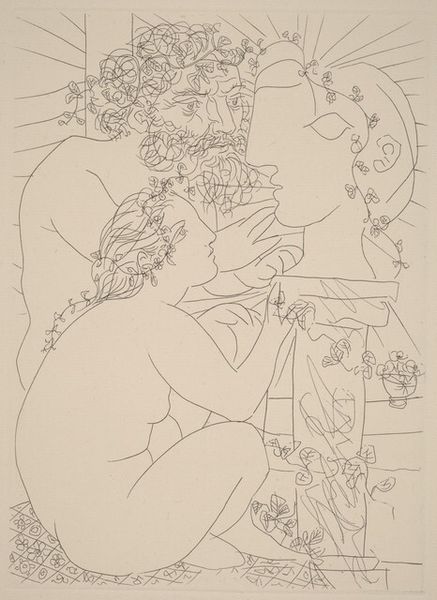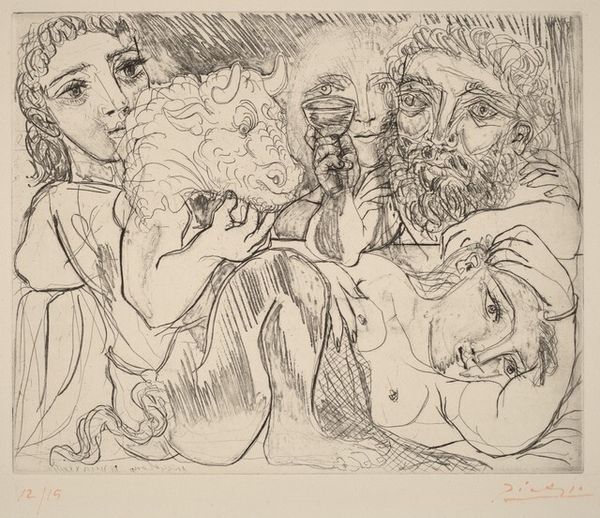
Sculptor and Model Looking at a Mirror Leaning against a Sculpted Self-Portrait (Sculpteur et modèle se regardant dans un miroir calé sur un autoportrait sculpté) 1933
0:00
0:00
print, etching
#
portrait
#
pencil drawn
#
cubism
# print
#
etching
#
pencil sketch
#
figuration
#
pencil drawing
#
group-portraits
#
line
#
portrait drawing
#
academic-art
#
nude
#
modernism
Copyright: National Gallery of Art: CC0 1.0
Editor: Here we have Picasso's 1933 etching, "Sculptor and Model Looking at a Mirror Leaning against a Sculpted Self-Portrait." The lines are so delicate, almost hesitant, and there's this intriguing layering of images—a sculptor, a model, a self-portrait. How do you approach something like this? Curator: The first thing that grabs me is the medium: etching. It's inherently a reproductive process, demanding planning, labor and expertise to achieve this delicate network of lines. Consider also the social context: Picasso, already a celebrated figure, representing himself as a *sculptor*. It hints at the shift in value placed on different forms of artistic labor, don't you think? Editor: That's interesting. I hadn't thought about the significance of it being an etching rather than, say, a painting. So, it's not just the image, but the method itself contributing to the meaning? Curator: Precisely. The means of production are paramount. He is not showing the artwork; the labour, and class implications involved in using etching, elevate it. Is Picasso democratizing access to images? The act of etching multiplies and diffuses, reaching potentially wider audiences. The relationship to both high art and commercialism is fascinating. Editor: I see what you mean. So, even in representing himself, he's also calling attention to the systems that make his art visible and accessible? Curator: Yes, it invites us to consider the economics of art, the social role of the artist and the democratization or even commodification of the art image. What does mass production of an intimate creative experience represent? Editor: That definitely shifts my understanding. I was initially focused on the personal relationships depicted. Curator: Of course. But grounding our interpretations in the material realities of art production can illuminate other possibilities. Editor: Absolutely, it makes me think about all art in a different light! Thanks, I hadn't really thought of approaching art this way. Curator: It's a refreshing lens, prompting us to delve deeper into art's place in society.
Comments
No comments
Be the first to comment and join the conversation on the ultimate creative platform.

